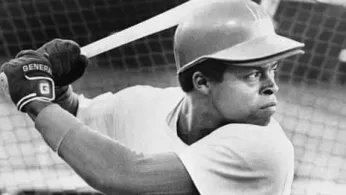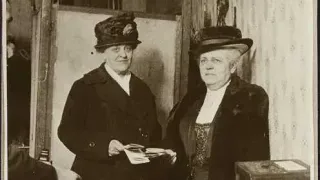
Aug 3
Glenn Burke: The Gay Trailblazer Who Gave the World the High-Five
READ TIME: 3 MIN.
Glenn Burke’s story is one of grit, joy, and quiet revolution. As an outfielder for the Los Angeles Dodgers and Oakland Athletics from 1976 to 1979, Burke’s athleticism and charisma made him a beloved figure in the clubhouse. But off the field, he was embarking on an even greater journey: living authentically as a gay man in one of America’s most scrutinized sports arenas .
Burke’s presence in the MLB was groundbreaking. He is widely recognized as the first Major League Baseball player to come out as gay, confiding in teammates, managers, and team executives at a time when LGBTQ+ athletes faced near-total invisibility and discrimination. “They can’t ever say now that a gay man can’t play in the majors, because I’m a gay man and I made it,” Burke later stated, encapsulating his pride in breaking new ground .
The high-five, now a universal gesture of celebration, originated in October 1977 when Burke ran onto the field to congratulate Dodgers teammate Dusty Baker after a home run. In a moment of exuberance, Burke raised his hand, and Baker slapped it—creating what would become a symbol of triumph and unity .
This spontaneous act went far beyond the ballpark. For Burke, the high-five became a means of connecting with others—both on and off the field. After his MLB career, he introduced the high-five to the San Francisco Gay Softball League, where it quickly evolved into a celebratory gesture that signified pride, resilience, and belonging within LGBTQ+ sports communities .
Despite his popularity among many teammates, Burke faced significant adversity. Dodgers manager Tommy Lasorda reportedly saw Burke as a “problem” and ultimately facilitated his trade to the Oakland Athletics—a move that angered players who admired Burke’s spirit . At Oakland, Burke received little playing time and was soon demoted to the minor leagues. The combination of injuries and persistent homophobia led him to retire at just 27 years old .
Yet, Burke’s departure from professional baseball marked the beginning of a new chapter of advocacy and community. Settling in San Francisco’s Castro District, Burke became a local legend—competing in the Gay Games, winning medals in track and basketball, and leading his softball team to the Gay World Series . His openness and perseverance inspired a generation of LGBTQ+ athletes to pursue their passions without hiding their identities.
Burke’s life was tragically cut short in 1995 due to AIDS-related complications. In his final years, he expressed hope that his experiences would make it easier for future LGBTQ+ athletes to thrive without fear . His legacy endures: In 2013, Burke was inducted into the National Gay and Lesbian Sports Hall of Fame, and in 2015, he joined the Baseball Reliquary’s Shrine of the Eternals .
The high-five remains a powerful, everyday gesture—one that connects people of all backgrounds in moments of shared joy. For LGBTQ+ communities, it stands as a reminder of Glenn Burke’s courage and the ongoing fight for equality in sports and beyond.
As author Phil Bildner puts it in his biography of Burke, “despite creating this joyful symbol, Glenn Burke, a gay Black man, wasn’t always given support and shown acceptance in return.” Today, the story of Glenn Burke and the high-five continues to inspire and unite, echoing his wish that “being yourself is more important than being a baseball player” .






